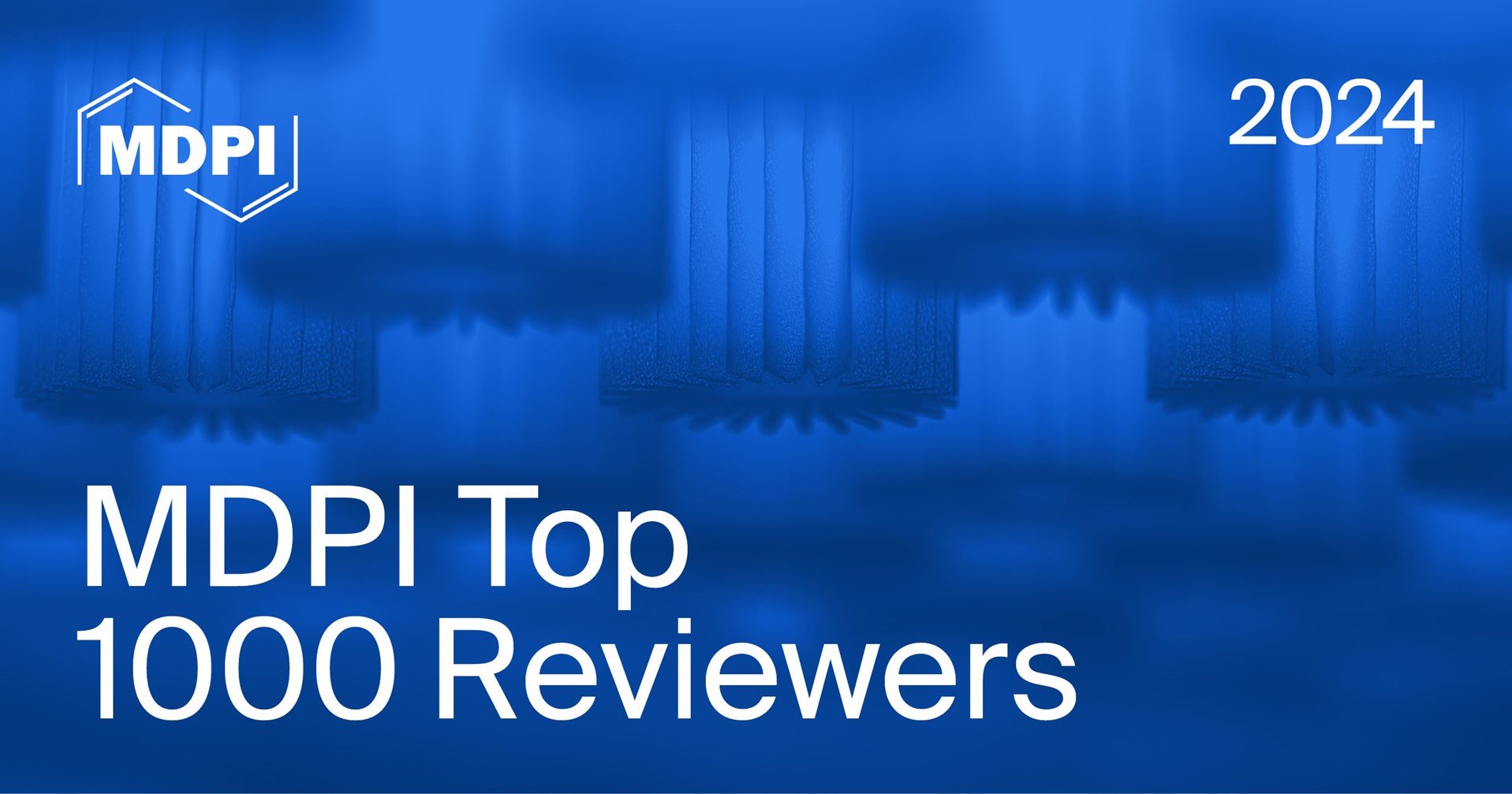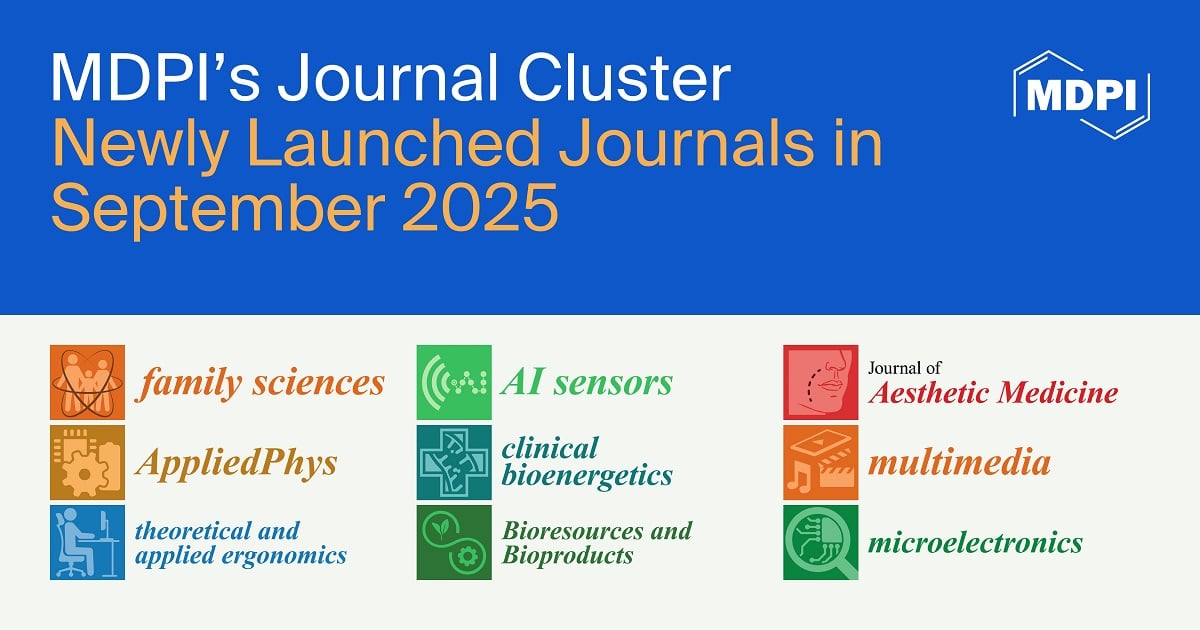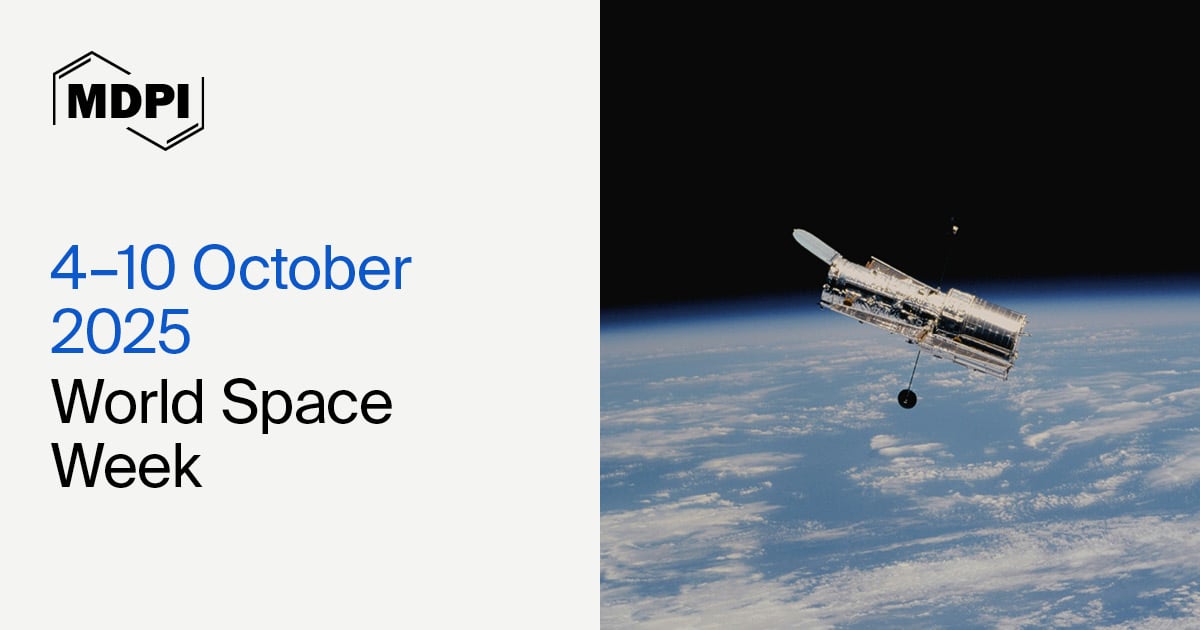Journal Description
Galaxies
Galaxies
is an international, peer-reviewed, open access journal on astronomy, astrophysics, and cosmology published bimonthly online by MDPI.
- Open Access— free for readers, with article processing charges (APC) paid by authors or their institutions.
- High Visibility: indexed within Scopus, ESCI (Web of Science), Astrophysics Data System, INSPIRE, Inspec, and other databases.
- Journal Rank: JCR - Q2 (Astronomy and Astrophysics) / CiteScore - Q2 (Astronomy and Astrophysics)
- Rapid Publication: manuscripts are peer-reviewed and a first decision is provided to authors approximately 23.4 days after submission; acceptance to publication is undertaken in 4.8 days (median values for papers published in this journal in the first half of 2025).
- Recognition of Reviewers: reviewers who provide timely, thorough peer-review reports receive vouchers entitling them to a discount on the APC of their next publication in any MDPI journal, in appreciation of the work done.
Impact Factor:
3.8 (2024);
5-Year Impact Factor:
3.1 (2024)
Latest Articles
Dwarf Galaxies in Focus: A Survey of Observational and Theoretical Studies
Galaxies 2025, 13(5), 117; https://doi.org/10.3390/galaxies13050117 - 21 Oct 2025
Abstract
►
Show Figures
This paper presents provides a comprehensive survey of dwarf galaxies, which represent the most numerous and diverse systems in the Universe. We discuss their definitions and morphological classifications, emphasizing the unique properties that distinguish them from globular clusters and giant galaxies. Special attention
[...] Read more.
This paper presents provides a comprehensive survey of dwarf galaxies, which represent the most numerous and diverse systems in the Universe. We discuss their definitions and morphological classifications, emphasizing the unique properties that distinguish them from globular clusters and giant galaxies. Special attention is given to their formation and evolutionary processes in the framework of hierarchical structure formation and ΛCDM cosmology, including the role of environmental mechanisms and stellar feedback. Star formation histories are explored based on observations and simulations, highlighting both bursty and extended activity across different dwarf types. We further examine the crucial role of dark matter in shaping the dynamics and structure of dwarf galaxies, as well as the core–cusp and missing satellites problems. Finally, we summarize insights from numerical simulations and theoretical models, which provide a bridge between observations and cosmological predictions. This synthesis demonstrates that dwarf galaxies remain essential laboratories for testing galaxy formation theories and probing the nature of dark matter.
Full article
Open AccessArticle
Stark Broadening of O I Spectral Lines
by
Milan S. Dimitrijević and Sylvie Sahal-Bréchot
Galaxies 2025, 13(5), 116; https://doi.org/10.3390/galaxies13050116 - 15 Oct 2025
Abstract
We do not know a priori chemical composition of a star. However, with more high resolution spectra becoming more abundant thanks to the development of space-born observations, atomic data including Stark broadening parameters for various spectral lines for elements in various ionisation stages
[...] Read more.
We do not know a priori chemical composition of a star. However, with more high resolution spectra becoming more abundant thanks to the development of space-born observations, atomic data including Stark broadening parameters for various spectral lines for elements in various ionisation stages are becoming more feasible. Particularly are important spectral lines of C-N-O peak in the distribution of abundances of chemical elements. For the calculation of Stark broadening parameters, spectral line full widths at half intensity maximum (FWHM) and shifts, we used semiclassical perturbation method. As the result, Stark widths and shifts for 36 spectral lines of neutral oxygen, broadened by the collisions with electrons, protons and helium ions, have been obtained and compared with other theoretical calculations. These data are of interest for a number of problems in astrophysics, plasma physics, as well as for inertial fusion and various plasmas in technology.
Full article
(This article belongs to the Special Issue Stellar Spectroscopy, Molecular Astronomy and Atomic Astronomy)
Open AccessArticle
Evolution of Size, Mass, and Density of Galaxies Since Cosmic Dawn
by
Rajendra P. Gupta
Galaxies 2025, 13(5), 115; https://doi.org/10.3390/galaxies13050115 - 10 Oct 2025
Abstract
►▼
Show Figures
The formation and evolution of galaxies and other astrophysical objects have become of great interest, especially since the launch of the James Webb Space Telescope in 2021. The mass, size, and density of objects in the early universe appear to be drastically different
[...] Read more.
The formation and evolution of galaxies and other astrophysical objects have become of great interest, especially since the launch of the James Webb Space Telescope in 2021. The mass, size, and density of objects in the early universe appear to be drastically different from those predicted by the standard cosmology—the

Figure 1
Open AccessSystematic Review
A Systematic Literature Review of Machine Learning Techniques for Observational Constraints in Cosmology
by
Luis Rojas, Sebastián Espinoza, Esteban González, Carlos Maldonado and Fei Luo
Galaxies 2025, 13(5), 114; https://doi.org/10.3390/galaxies13050114 - 9 Oct 2025
Abstract
►▼
Show Figures
This paper presents a systematic literature review focusing on the application of machine learning techniques for deriving observational constraints in cosmology. The goal is to evaluate and synthesize existing research to identify effective methodologies, highlight gaps, and propose future research directions. Our review
[...] Read more.
This paper presents a systematic literature review focusing on the application of machine learning techniques for deriving observational constraints in cosmology. The goal is to evaluate and synthesize existing research to identify effective methodologies, highlight gaps, and propose future research directions. Our review identifies several key findings: (1) Various machine learning techniques, including Bayesian neural networks, Gaussian processes, and deep learning models, have been applied to cosmological data analysis, improving parameter estimation and handling large datasets. However, models achieving significant computational speedups often exhibit worse confidence regions compared to traditional methods, emphasizing the need for future research to enhance both efficiency and measurement precision. (2) Traditional cosmological methods, such as those using Type Ia Supernovae, baryon acoustic oscillations, and cosmic microwave background data, remain fundamental, but most studies focus narrowly on specific datasets. We recommend broader dataset usage to fully validate alternative cosmological models. (3) The reviewed studies mainly address the

Figure 1
Open AccessCommunication
Nucleosynthesis of Cobalt and Copper
by
Beatriz Barbuy, Amâncio C. S. Friaça and Heitor Ernandes
Galaxies 2025, 13(5), 113; https://doi.org/10.3390/galaxies13050113 - 22 Sep 2025
Abstract
Chemical abundances of cobalt (Co; Z = 27) and copper (Cu; Z = 29) in bulge and halo stars are presented and compared with chemical evolution models. The aim is to distinguish if Co and Cu are dominantly produced by neutron-capture or the
[...] Read more.
Chemical abundances of cobalt (Co; Z = 27) and copper (Cu; Z = 29) in bulge and halo stars are presented and compared with chemical evolution models. The aim is to distinguish if Co and Cu are dominantly produced by neutron-capture or the alpha-rich freeze-out processes. Neutron-capture can be identified by a secondary behaviour in the [X/Fe] vs. [Fe/H] plot, and alpha-rich freeze-out would give rather a primary behaviour.
Full article
(This article belongs to the Special Issue Neutron Capture Processes in the Universe)
►▼
Show Figures

Figure 1
Open AccessReview
GW170817: A Short Review of the First Multimessenger Event in Gravitational Astronomy
by
Rosa Poggiani
Galaxies 2025, 13(5), 112; https://doi.org/10.3390/galaxies13050112 - 19 Sep 2025
Abstract
The first detection of gravitational waves from the binary black merger GW150914 started the era of gravitational astronomy. The observation of the binary neutron star merger GW170817 and of its associated electromagnetic counterpart GRB 170817A started multi-messenger gravitational astronomy. This short review discusses
[...] Read more.
The first detection of gravitational waves from the binary black merger GW150914 started the era of gravitational astronomy. The observation of the binary neutron star merger GW170817 and of its associated electromagnetic counterpart GRB 170817A started multi-messenger gravitational astronomy. This short review discusses the discovery of GW170817 and the follow-up of the electromagnetic counterpart, together with the broad range of results in astrophysics and fundamental physics, including the Gamma-Ray Burst field. The GW170817/GRB 170817A observation showed that binary neutron star mergers can explain at least a fraction of short Gamma-Ray Bursts. The optical and infrared evolution of the associated AT 2017gfo transient showed that binary neutron star mergers are sites of r-process nucleo-synthesis. The combination of gravitational and electromagnetic observations has been used to estimate the Hubble parameter, the speed of gravitational waves, and the equation of state of nuclear matter. The increasing sensitivity of interferometric detectors and the forthcoming operation of third generation detectors will lead to an improved statistics of binary neutron star mergers.
Full article
(This article belongs to the Special Issue Gamma-Ray Bursts in Multiwavelength: Theory, Observational Correlations and GRB Cosmology)
►▼
Show Figures

Figure 1
Open AccessReview
Timing Analysis of Black Hole X-Ray Binaries with Insight-HXMT
by
Haifan Zhu and Wei Wang
Galaxies 2025, 13(5), 111; https://doi.org/10.3390/galaxies13050111 - 19 Sep 2025
Abstract
►▼
Show Figures
The Hard X-ray Modulation Telescope (HXMT), China’s first X-ray astronomy satellite, has significantly contributed to the study of fast variability in black hole X-ray binaries through its broad energy coverage (1–250 keV), high timing resolution, and sensitivity to hard X-rays. This review presents
[...] Read more.
The Hard X-ray Modulation Telescope (HXMT), China’s first X-ray astronomy satellite, has significantly contributed to the study of fast variability in black hole X-ray binaries through its broad energy coverage (1–250 keV), high timing resolution, and sensitivity to hard X-rays. This review presents a comprehensive overview of timing analysis techniques applied to black hole X-ray binaries using Insight-HXMT data. We introduce the application and comparative strengths of several time-frequency analysis methods, including traditional Fourier analysis, wavelet transform, bicoherence analysis, and Hilbert-Huang transform. These methods offer complementary insights into the non-stationary and nonlinear variability patterns observed in black hole X-ray binaries, particularly during spectral state transitions and quasi-periodic oscillations. We discuss how each technique has been employed in recent Insight-HXMT studies to characterize timing features such as low-frequency QPOs, phase lags, and power spectrum evolution across different energy bands. Moreover, we present novel phenomena revealed by Insight-HXMT observations, including the detection of high-energy QPOs, spectral parameter modulation with QPO phase, and a new classification scheme for QPO types. The integration of multiple analysis methods enables a more nuanced understanding of the accretion dynamics and the geometry of the inner accretion flow, shedding light on fundamental physical processes in relativistic environments.
Full article
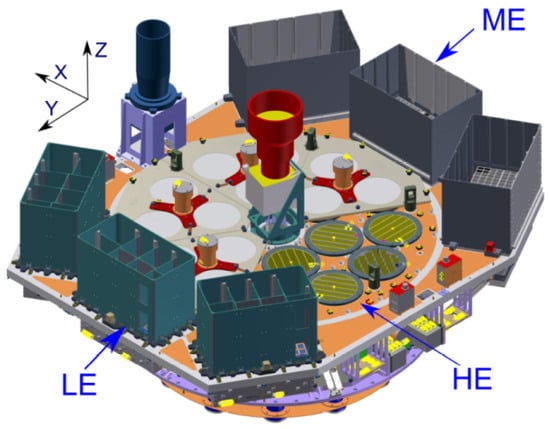
Figure 1
Open AccessArticle
Comparative Photometry of the Quiet Quasar PDS 456 and the Radio-Loud Blazar 3C 273
by
Alberto Silva Betzler, Ingrid dos Santos Delfino, Agábio Brasil dos Santos, Roberto Mendes Dias and Orahcio Felicio de Sousa
Galaxies 2025, 13(5), 110; https://doi.org/10.3390/galaxies13050110 - 15 Sep 2025
Abstract
►▼
Show Figures
A comparative analysis of the photometric variability of the blazar 3C 273 and the quasar PDS 456 using multi-band data from ground- and space-based platforms (2015–2025) reveals contrasting behaviors. For 3C 273, a statistically significant secular dimming was detected in the ATLASc
[...] Read more.
A comparative analysis of the photometric variability of the blazar 3C 273 and the quasar PDS 456 using multi-band data from ground- and space-based platforms (2015–2025) reveals contrasting behaviors. For 3C 273, a statistically significant secular dimming was detected in the ATLASc-band light curve
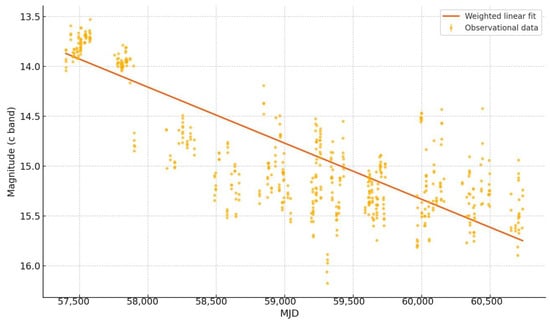
Figure 1
Open AccessReview
Optical and X-Ray Variability of Gamma Cas Analogs
by
Alexander Kholtygin
Galaxies 2025, 13(5), 109; https://doi.org/10.3390/galaxies13050109 - 15 Sep 2025
Abstract
(This article belongs to the Special Issue Circumstellar Matter in Hot Star Systems)
►▼
Show Figures

Figure 1
Open AccessArticle
Testing CCC+TL Cosmology with Galaxy Rotation Curves
by
Rajendra P. Gupta
Galaxies 2025, 13(5), 108; https://doi.org/10.3390/galaxies13050108 - 12 Sep 2025
Cited by 1
Abstract
This paper aims to explore whether astrophysical observations, primarily galaxy rotation curves, result from covarying coupling constants (CCC) rather than from dark matter. We have shown in earlier papers that cosmological observations, such as supernovae type 1a (Pantheon+), the small size of galaxies
[...] Read more.
This paper aims to explore whether astrophysical observations, primarily galaxy rotation curves, result from covarying coupling constants (CCC) rather than from dark matter. We have shown in earlier papers that cosmological observations, such as supernovae type 1a (Pantheon+), the small size of galaxies at cosmic dawn, baryon acoustic oscillations (BAO), the sound horizon in the cosmic microwave background (CMB), and time dilation effect, can be easily accounted for without requiring dark energy and dark matter when coupling constants are permitted to evolve in an expanding Universe, as predicted by Dirac, and the redshift is considered jointly due to the Universe’s expansion and Zwicky’s tired light (TL) effect. Here, we show that the CCC parameter α is responsible for generating the illusion of dark matter and dark energy, which we call α-matter and α-energy, and is influenced by the baryonic matter density distribution. While cosmologically α is a constant determined for the homogenous and isotropic Universe, e.g., by fitting Pantheon+ data, it can vary locally due to the extreme anisotropy of the matter distribution. Thus, in high baryonic density regions, one expects α-matter and α-energy densities to be relatively low and vice versa. We present its application to a few galaxy rotation curves from the SPARC database and find the results promising.
Full article
(This article belongs to the Special Issue Alternative Interpretations of Observed Galactic Behaviors)
►▼
Show Figures

Figure 1
Open AccessArticle
The Murchison Widefield Array Enters Adolescence: A Personal Review of the Early Years of Operations
by
Steven J. Tingay
Galaxies 2025, 13(5), 107; https://doi.org/10.3390/galaxies13050107 - 11 Sep 2025
Abstract
The Murchison Widefield Array (MWA) is a low frequency radio interferometer designed and developed by an international consortium, operated on behalf of the consortium by Curtin University. The MWA is a Precursor for the low frequency Square Kilometre Array (SKA) and is located
[...] Read more.
The Murchison Widefield Array (MWA) is a low frequency radio interferometer designed and developed by an international consortium, operated on behalf of the consortium by Curtin University. The MWA is a Precursor for the low frequency Square Kilometre Array (SKA) and is located at the SKA site in Western Australia, Inyarrimanha Ilgari Bundara, the CSIRO Murchison Radio-astronomy Observatory. Commencing science operations in 2013 after an extended development period, the MWA has performed observations over a wide set of science objectives, has been upgraded multiple times, and has played a fundamental role in the development of the low frequency SKA. As MWA Program Manager from 2008 to 2011, as Director from 2011 until 2015, and then again from 2021 to the present, I describe some personal reflections on the MWA’s activities and successes in these different dimensions, as well as my view of some of the approaches that have enabled these successes. I offer some of the lessons I’ve perceived over the last 17+ years in the project.
Full article
(This article belongs to the Special Issue Recent Advances in Radio Astronomy)
Open AccessArticle
Dynamics of Compact Stellar Solutions Admitting Anisotropic Fluid: A Comparative Analysis of GR and Non-Conserved Rastall Gravity
by
Tayyab Naseer, Muhammad Sharif, Fatima Chand, Baiju Dayanandan and Ali Elrashidi
Galaxies 2025, 13(5), 106; https://doi.org/10.3390/galaxies13050106 - 9 Sep 2025
Abstract
►▼
Show Figures
This study proposes a couple of analytical solutions that characterize the anisotropic dense celestial bodies within the Rastall-Rainbow theoretical framework. The analysis assumes a static spherically symmetric matter distribution and derives the corresponding modified field equations. By utilizing well-established radial metric functions and
[...] Read more.
This study proposes a couple of analytical solutions that characterize the anisotropic dense celestial bodies within the Rastall-Rainbow theoretical framework. The analysis assumes a static spherically symmetric matter distribution and derives the corresponding modified field equations. By utilizing well-established radial metric functions and merging them with the two principal pressures, we obtain differential equations related to the time component. Subsequently, we perform the integration of these equations to determine the remaining geometric quantity that encompasses various integration constants. The proposed interior solutions are then matched with the Schwarzschild exterior metric at the boundary of the compact object, facilitating the determination of the constants. Additionally, the incorporation of the non-minimal coupling parameter into these constants is accomplished by enforcing the null radial pressure at the boundary. Afterwards, we rigorously examine the physical characteristics and critical stability conditions of the formulated models under observational data from two pulsars, say 4U 1820-30 and LMC X-4. It is concluded that our models are well-aligned with essential criteria required to ensure the physical viability of stellar structures, subject to specific parametric values.
Full article

Figure 1
Open AccessArticle
Photometric Monitoring of the First Eclipsing Binary Be Star: V658 Car
by
Tajan H. de Amorim, Alex C. Carciofi, Alexandre Zanardo, Carlos Colesanti, Cristóvão Jacques, Denis Kulh, João Antonio Mattei, Marcelo Domingues, Marco Rocca, Sérgio Silva, Tasso Napoleão and Jonathan Labadie-Bartz
Galaxies 2025, 13(5), 105; https://doi.org/10.3390/galaxies13050105 - 8 Sep 2025
Abstract
V658 Car is the first known eclipsing binary system involving a classical Be star and an sdOB companion, offering a unique opportunity to study disk physics and binary interactions in unprecedented detail. From TESS data and multi-color observations from the comissão para a
[...] Read more.
V658 Car is the first known eclipsing binary system involving a classical Be star and an sdOB companion, offering a unique opportunity to study disk physics and binary interactions in unprecedented detail. From TESS data and multi-color observations from the comissão para a colaboração entre profissionais e amadores collaboration, we analyze the system’s color–magnitude diagram and compare it with radiative transfer models that include the Be star, its circumstellar disk, and the sdOB companion. While the stellar eclipses are well reproduced, two features observed in the multi-color photometry challenge the current modeling paradigm: the discrepancy between the observed reddening and the modeled blueing during the first attenuation phase and the complete lack of modeled attenuation around the second stellar eclipse. These issues highlight the need for more sophisticated modeling approaches to capture the complex interplay between disk opacity and binary dynamics.
Full article
(This article belongs to the Special Issue Circumstellar Matter in Hot Star Systems)
►▼
Show Figures

Figure 1
Open AccessArticle
One-Dimensional Analytical Solutions of the Transport Equations for Incompressible Magnetohydrodynamic (MHD) Turbulence
by
Bingbing Wang, Gary P. Zank, Laxman Adhikari and Swati Sharma
Galaxies 2025, 13(5), 104; https://doi.org/10.3390/galaxies13050104 - 3 Sep 2025
Abstract
►▼
Show Figures
We derive one-dimensional (1D) analytical solutions for the transport equations of incompressible magnetohydrodynamic (MHD) turbulence, including the Elsässer energies and the correlation lengths. The solutions are suitable for an arbitrary given background convection speed and Alfvén speed profiles but require near equipartition of
[...] Read more.
We derive one-dimensional (1D) analytical solutions for the transport equations of incompressible magnetohydrodynamic (MHD) turbulence, including the Elsässer energies and the correlation lengths. The solutions are suitable for an arbitrary given background convection speed and Alfvén speed profiles but require near equipartition of turbulent kinetic energy and magnetic field energy. These analytical solutions provide a simple tool to investigate the evolution of turbulence and resulting energetic particle diffusion coefficients in various space and astrophysical environments that possess simple geometry.
Full article

Figure 1
Open AccessReview
A Review of Lunar Environment and In-Situ Resource Utilization for Achieving Long-Term Lunar Habitation
by
Chang Wang, Guoqing Zhang, Yaohui Wang and Lei Song
Galaxies 2025, 13(5), 103; https://doi.org/10.3390/galaxies13050103 - 3 Sep 2025
Abstract
►▼
Show Figures
The Moon’s unique environment, strategic position, and resource abundance make it a key target for deep space exploration. As lunar missions evolve from research to long-term habitation, leveraging local resources is essential to reduce dependence on Earth-based supply chains. Despite significant studies on
[...] Read more.
The Moon’s unique environment, strategic position, and resource abundance make it a key target for deep space exploration. As lunar missions evolve from research to long-term habitation, leveraging local resources is essential to reduce dependence on Earth-based supply chains. Despite significant studies on the lunar environment and in-situ resource utilization (ISRU), a unified framework that integrates these findings remains lacking. This article addresses this gap by systematically reviewing and synthesizing current research to support sustainable lunar development. It first explores the use of extreme lunar environmental factors such as thermal gradients, weak magnetic fields, subsurface cavities, and geographic advantages. It then examines lunar water and mineral resource development, highlighting methods for detection, extraction, purification, and storage, alongside strategies for utilizing various minerals. The article further reviews recent progress in in-situ manufacturing, construction technologies, energy regeneration, and closed-loop life-support systems vital for lunar base establishment. These advances are crucial for creating sustainable infrastructure and maintaining life on the Moon. Finally, the paper outlines the challenges and limitations associated with ISRU and offers perspectives on future directions, aiming to inform the design of next-generation lunar missions and facilitate permanent human presence on the Moon.
Full article

Figure 1
Open AccessReview
Jet Feedback on kpc Scales: A Review
by
Dipanjan Mukherjee
Galaxies 2025, 13(5), 102; https://doi.org/10.3390/galaxies13050102 - 2 Sep 2025
Abstract
►▼
Show Figures
Relativistic jets from AGN are an important driver of feedback in galaxies. They interact with their environments over a wide range of physical scales during their lifetime, and an understanding of these interactions is crucial for unraveling the role of supermassive black holes
[...] Read more.
Relativistic jets from AGN are an important driver of feedback in galaxies. They interact with their environments over a wide range of physical scales during their lifetime, and an understanding of these interactions is crucial for unraveling the role of supermassive black holes in shaping galaxy evolution. The impact of such jets has been traditionally considered in the context of heating large-scale environments. However, in the last few decades, there has been additional focus on the immediate impact of jet feedback on the host galaxy itself. In this review, we outline the development of various numerical simulations from the onset of research on jets to the present day, where sophisticated numerical techniques have been employed to study jet feedback, including a range of physical processes. The jets can act as important agents of energy injection into a host’s ISM, as confirmed in both observations of multi-phase gas as well as in simulations. Such interactions have the potential to impact the kinematics of the gas as well as star formation. We summarize recent results from simulations of jet feedback on kpc scales and outline the broader implications for observations and galaxy evolution.
Full article

Figure 1
Open AccessArticle
Determination of Orbital Parameters of Binary Star Systems Using the MCMC Method
by
Nadezhda L. Vaidman, Shakhida T. Nurmakhametova, Anatoly S. Miroshnichenko, Serik A. Khokhlov, Aldiyar T. Agishev, Azamat A. Khokhlov, Yeskendyr K. Ashimov and Berik S. Yermekbayev
Galaxies 2025, 13(5), 101; https://doi.org/10.3390/galaxies13050101 - 2 Sep 2025
Abstract
►▼
Show Figures
We present new spectroscopic orbits for the bright binaries Mizar B, 3 Pup,
We present new spectroscopic orbits for the bright binaries Mizar B, 3 Pup,

Figure 1
Open AccessArticle
Energy of Photons in Expanding Spacetime: Comparing FLRW and Conformal Cosmology Metrics
by
Václav Vavryčuk
Galaxies 2025, 13(5), 100; https://doi.org/10.3390/galaxies13050100 - 2 Sep 2025
Abstract
We investigate the behaviour of photons in Riemann spacetime, focusing on how their velocity and energy are affected by cosmic expansion. Specifically, we examine the differences in energy conservation depending on the cosmological model. Our findings indicate that photons exhibit fundamentally different behaviour
[...] Read more.
We investigate the behaviour of photons in Riemann spacetime, focusing on how their velocity and energy are affected by cosmic expansion. Specifically, we examine the differences in energy conservation depending on the cosmological model. Our findings indicate that photons exhibit fundamentally different behaviour based on the chosen metric. In the standard
Open AccessReview
The Astronomical Hub: A Unified Ecosystem for Modern Astronomical Research
by
Yerlan Aimuratov, Vitaliy Kim, Aleksander Serebryanskiy, Denis Yurin, Maxim Krugov, Chingiz Akniyazov, Saule Shomshekova, Maxim Makukov, Gaukhar Aimanova, Rashit Valiullin, Raushan Kokumbaeva, Alan Kazkenov and Chingis Omarov
Galaxies 2025, 13(5), 99; https://doi.org/10.3390/galaxies13050099 - 1 Sep 2025
Abstract
We present the conceptual framework of the Astronomical Hub (AstroHub), a unified platform combining various optical instruments at a single observatory. Its major approach lies in arranging conditions for research groups to install telescopes and equipment and participate in joint projects. AstroHub is
[...] Read more.
We present the conceptual framework of the Astronomical Hub (AstroHub), a unified platform combining various optical instruments at a single observatory. Its major approach lies in arranging conditions for research groups to install telescopes and equipment and participate in joint projects. AstroHub is planned to integrate Virtual Observatory (VO) tools, FAIR data principles, and a telescope network to create a powerful and attractive ecosystem for both robust near-Earth object (NEO) monitoring and diverse deep space research. We provide an overview of the AstroHub development directions in the case study of the Assy-Turgen Observatory.
Full article
(This article belongs to the Special Issue Circumstellar Matter in Hot Star Systems)
►▼
Show Figures

Figure 1
Open AccessArticle
RAD@home Citizen Science Discovery of Two Spiral Galaxies Where the 30–220 kpc Radio Lobes Are Possibly Shaped by Ram Pressure Stripping
by
Prakash Apoorva, Ananda Hota, Pratik Dabhade, P. K. Navaneeth, Dhruv Nayak and Arundhati Purohit
Galaxies 2025, 13(5), 98; https://doi.org/10.3390/galaxies13050098 - 22 Aug 2025
Cited by 1
Abstract
We report the RAD@home citizen science discovery of two rare spiral-host radio galaxies (NGC 3898 and WISEA J221656.57-132042434.1 or RAD-“Thumbs up” galaxy), both exhibiting asymmetric radio lobes extending over 30 to 220 kiloparsec scales. We present a multi-wavelength image analysis of these two
[...] Read more.
We report the RAD@home citizen science discovery of two rare spiral-host radio galaxies (NGC 3898 and WISEA J221656.57-132042434.1 or RAD-“Thumbs up” galaxy), both exhibiting asymmetric radio lobes extending over 30 to 220 kiloparsec scales. We present a multi-wavelength image analysis of these two sources using radio, optical, and ultraviolet data. Both host galaxies are young, star-forming systems with asymmetric or distorted stellar disks. These disks show similarities to those in galaxies undergoing ram pressure stripping, and the radio morphologies resemble those of asymmetric or bent FR-II and wide-angle-tailed radio galaxies. We suggest that non-uniform gas density in the environment surrounding the ram pressure-stripped disks may contribute to the observed asymmetry in the size, shape, and brightness of bipolar radio lobes. Such environmental effects, when properly accounted for, could help explain many of the non-standard radio morphologies observed in Seyfert galaxies and in recently identified populations of galaxies with galaxy-scale radio jets, which are now being revealed through deep and sensitive radio surveys with uGMRT, MeerKAT, LOFAR, and, in the future, SKAO. These findings also underscore the potential of citizen science to complement professional research and data-driven approaches involving machine learning and artificial intelligence in the analysis of complex radio sources.
Full article
(This article belongs to the Special Issue Recent Advances in Radio Astronomy)
►▼
Show Figures

Figure 1

Journal Menu
► ▼ Journal Menu-
- Galaxies Home
- Aims & Scope
- Editorial Board
- Reviewer Board
- Topical Advisory Panel
- Instructions for Authors
- Special Issues
- Topics
- Topical Collections
- Article Processing Charge
- Indexing & Archiving
- Editor’s Choice Articles
- Most Cited & Viewed
- Journal Statistics
- Journal History
- Journal Awards
- Conferences
- Editorial Office
Journal Browser
► ▼ Journal BrowserHighly Accessed Articles
Latest Books
E-Mail Alert
News
Topics
Topic in
Symmetry, Galaxies, Universe, Particles, Astronomy
Dark Matter, Dark Energy and Cosmological Anisotropy
Topic Editors: Kazuharu Bamba, Panayiotis Stavrinos, Ivan De MartinoDeadline: 31 December 2026

Conferences
Special Issues
Special Issue in
Galaxies
Alternative Interpretations of Observed Galactic Behaviors
Guest Editors: Anne M. Hofmeister, Robert E. CrissDeadline: 15 November 2025
Special Issue in
Galaxies
Origins and Models of Planetary Nebulae, 2nd Edition
Guest Editors: Andreas Ritter, Xuan FangDeadline: 15 November 2025
Special Issue in
Galaxies
Challenges for Third-Generation Gravitational Wave Detectors and Beyond
Guest Editors: Annalisa Allocca, Lucia Trozzo, Valeria SequinoDeadline: 15 December 2025
Special Issue in
Galaxies
Physics of Black Hole Spins
Guest Editors: George Wong, Alejandro Cárdenas-Avendaño, Delilah Gates, Javier GarciaDeadline: 31 December 2025
Topical Collections
Topical Collection in
Galaxies
A Trip across the Universe: Our Present Knowledge and Future Perspectives
Collection Editor: Emilio Elizalde




